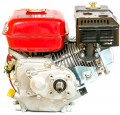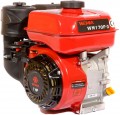Power
The rated power of the engine (the highest power it can deliver in normal operation) in kilowatts. Initially, the power of internal combustion engines (ICE) was usually denoted in horsepower, but now it is also common to record in watts / kilowatts; this, in particular, makes it easier to compare the power of internal combustion engines and electric motors. Some units can be converted to others: 1 hp approximately equal to 0.735 kW.
In general, the more powerful the engine, the more speed and tractive effort it is able to develop. On the other hand, this indicator directly affects the weight, dimensions, and most importantly, the cost of the unit, while the real need for high power is relatively rare. Therefore, it is worth choosing according to this indicator, taking into account the features of the planned application; specific recommendations on choosing an engine for a specific technique and tasks can be found in special sources. We only note that models of the same power can differ in speed and "torque"; see "Shaft speed" for details.
Piston stroke
The distance that an engine piston travels from one extreme point to another. In general, it is a rather specific characteristic and is rarely required in fact (for most ordinary users, it is never needed at all in the entire “life” of the engine).
Fuel tank volume
The nominal volume of the engine's fuel tank is the maximum amount of fuel that can be safely filled there. Knowing the fuel consumption (see below), it is possible to estimate the operating time of the unit on a single refill by the volume of the tank by dividing the tank capacity by the consumption.
Large fuel tanks, on the one hand, allow you to work for a long time without refueling, on the other hand, they significantly affect the dimensions and weight of the engine. Also note that many models allow refueling "on the go." When choosing a tank volume, manufacturers take into account these points, as well as the “weight category” and the specifics of the engine application.
Specific fuel consumption
Specific consumption in this case can be described as the amount of fuel consumed by the engine per hour per 1 kW of generated power. The lower this figure, the higher the efficiency of the engine and the more economical it is. Specific consumption data is especially useful for comparing units with different capacities.

